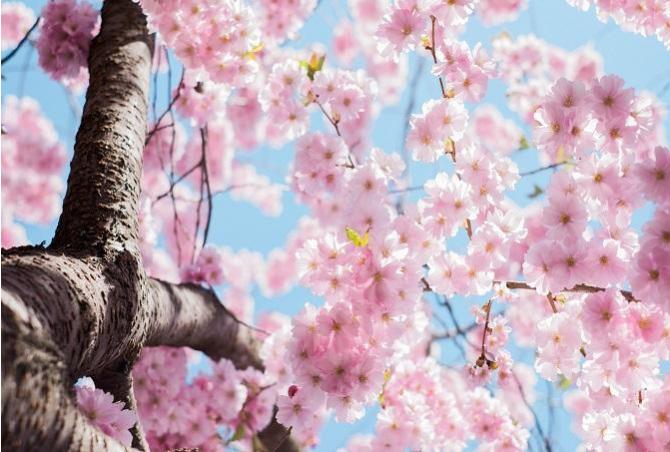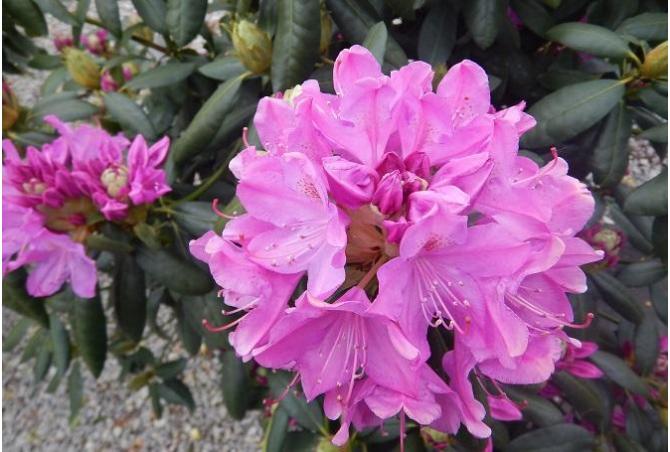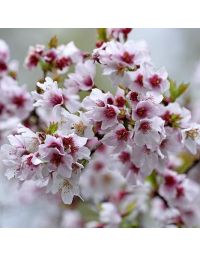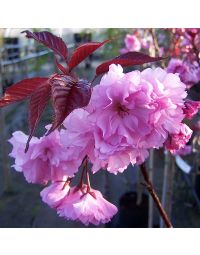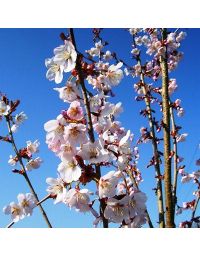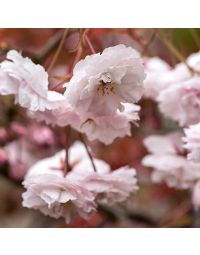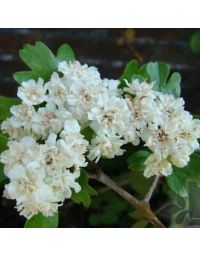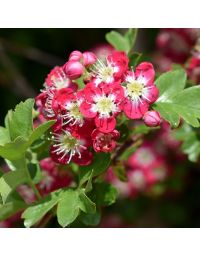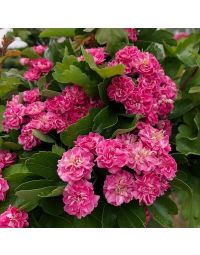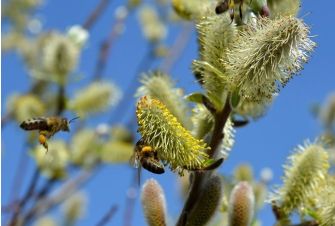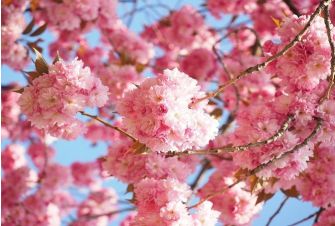Choosing a flowering tree or shrub
There is a tree suitable for almost every outdoor location the UK. But when it comes to spring blossom, which tree is best for you?
Firstly, consider the size of the space available. The right plant in the right place will ensure the long-term success of your tree.
- Are there any overhead cables or underground services?
- How close to buildings or hard landscaping is the allocated space?
- Is it next to a path or a seating area - i.e. is it likely to get in the way of your circulation route? You don't want to have to prune your tree because it's grown too large - this will spoil its character and shape.
Once you have evaluated the site in terms of size, you will know the maximum height and spread that you can allocate to a tree.
When looking at potentially suitable trees, always consider the mature height. Many suppliers state the size after 10 or 20 years, but it might not be fully grown until much older than this.
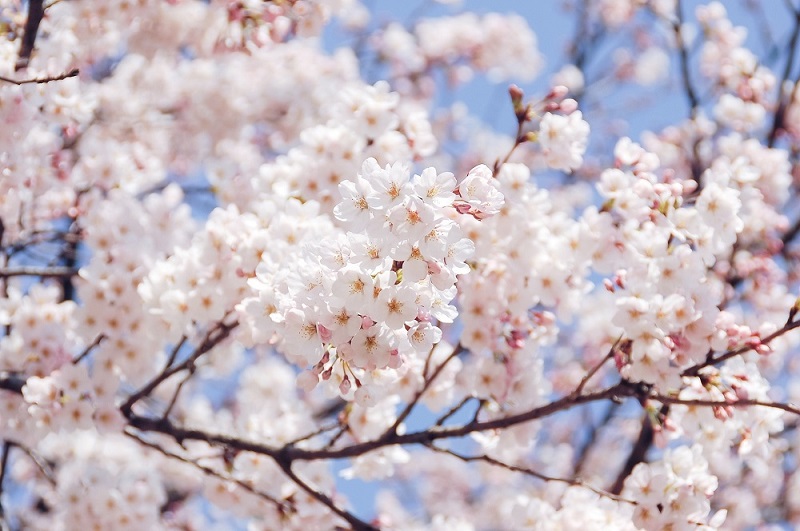

That's one tick against the checklist.
✅ You know the maximum size of tree to fit the space
What about the shape of the tree? If there's not a lot of width, perhaps a columnar, or upright shape might be best. Some trees spread as wide as the height. Perhaps a weeping form is pleasing to you.
✅ Shape of tree
Next, consider the aspect - how much sun will fall on your tree? Most ornamental cherries like sunshine. Some blossom, however, might be scorched by early morning sun during frosty periods if they face East. This applies to early flowering species, particularly Magnolia, Camellia and Pieris. If your chosen site catches the first of the sun's rays it would be best to avoid trees and shrubs that flower early in the season. If the tree planting site faces south or west, early blooms will be more protected.
There's your next tick on the checklist.
✅ Flowering season appropriate for the site
Don't forget the site and soil conditions. Is it free-draining, boggy or exceptionally dry? Flowering cherries rarely do well in wet soils. Some can tolerate chalk soils and several might cope with a coastal location - do your research before making a choice.
✅ Suitable for soil and site conditions
Personal preference comes into play at this point. What colour flowers do you like? There are white blossom trees, blush pink, pale pink through to purple-pink. The choice is yours.
✅ Blossom colour
Then you might want to consider wildlife. Double flowers look blousey and immensely impressive, but bees and other beneficial garden pollinators find it difficult to access pollen and nectar. Is this important to you?
✅ Type of flowers
Tree selection
Now comes the fun part! Narrowing down your tree selection according to your criteria.
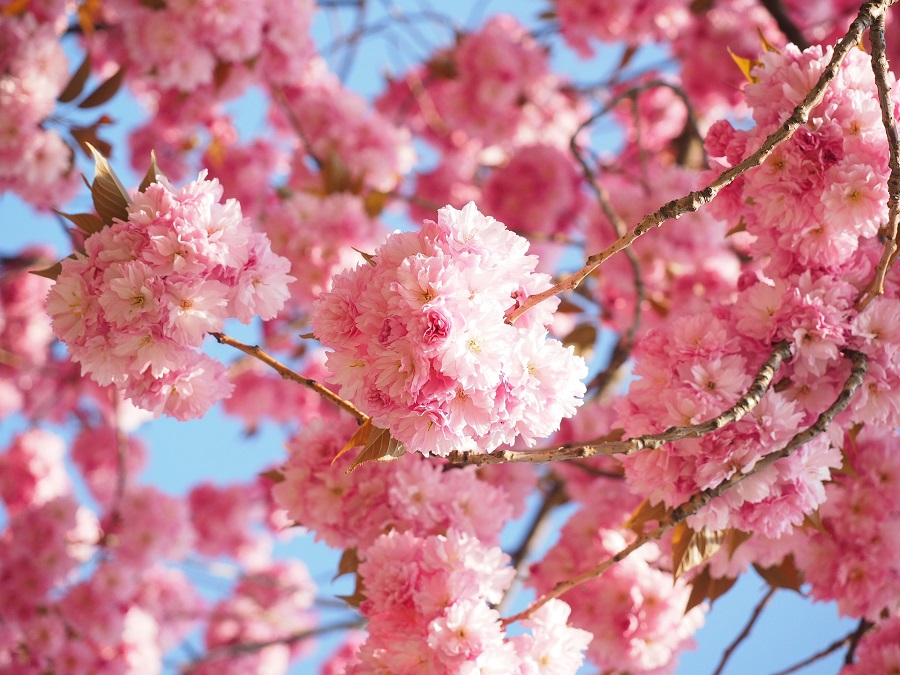

The explosion of spring blossom is a magical moment. Flowering cherries are generally picked for their overall magnificence when it comes to flowers. However, many people prefer other species that might produce slightly less blossom but offer different things throughout the year. There is no right or wrong answer, provided you always consider the site suitability. A good place to start is by looking at the Royal Horticultural Society trees that have gained the Award of Garden Merit (RHS AGM).
Ornamental Flowering Cherries
If a diminutive little specimen for a pot or the front of the border is your tree of choice, consider Prunus 'Kojo no mai', the Fuji cherry. It grows to only around 150cms tall x 100cms spread. The delicate white to pale pink flowers (pictured below) turn to dark pink in the centre as they age. The twigs are curiously zig-zag shaped, which gives it an architectural appeal all year round.
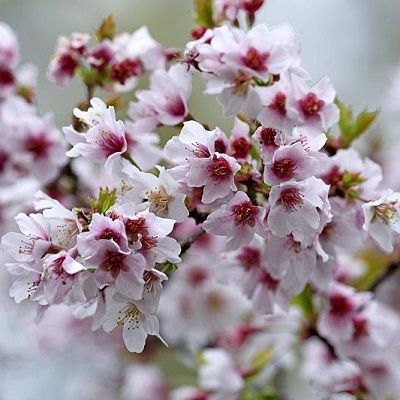

Prunus 'Accolade' is a slightly larger tree, reaching a height and spread of up to 8m. Bright pink buds burst into a mid-pink, frothy blossom early in the spring (pictured below). What's more, this RHS AGM tree delivers extra joy twice per year as it displays good autumn leaf colour too.
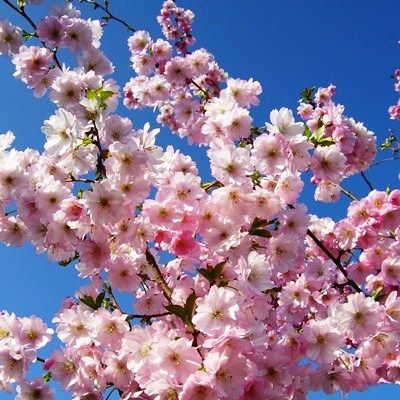

Perhaps a purple-leafed flowering cherry would fit with your colour scheme. These can look highly effective when planted against a lime green or yellow backdrop: a hedge or even a painted wall. Prunus cerasifera 'Nigra' is known as the black cherry plum and this charming tree holds an RHS AGM. Bees certainly love the pale pink single flowers (pictured below). It's a medium-sized tree, reaching an eventual height and spread of up to 10m.
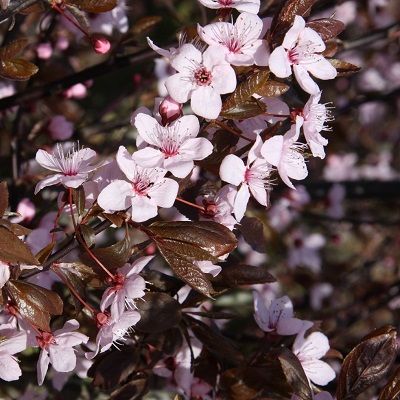

If you have space for a larger ornamental cherry tree, consider the charms of Prunus sargentii, the Sargent's cherry. Not only does it produce single pink flowers in mid-spring, loved by beneficial garden insects (pictured below), but the leaves turn a splendid orange and red in autumn before dropping. It can grow to a height and spread of up to 12m.
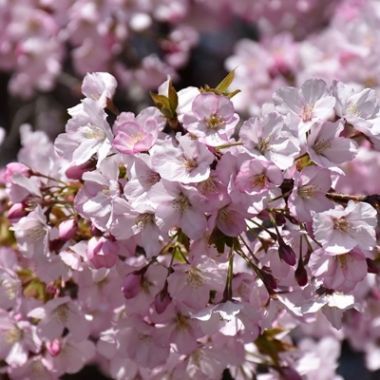

No mention of cherry trees is complete without the inclusion of Prunus padus, the bird cherry. Prunus padus 'Watereri' is a glorious tree which produces plumes of white, almond-scented blossom (pictured below), loved by pollinators. This tree is greatly attractive to wildlife, including small dark fruits which are loved by birds. It reaches a height of up to 12m with a spread of up to 8m.
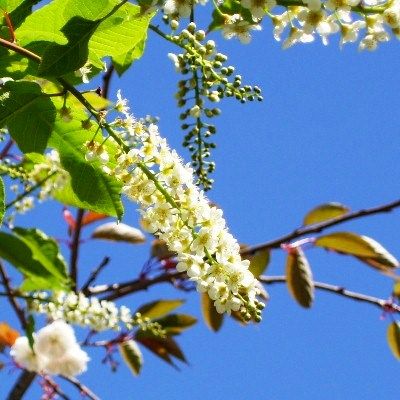

Also consider these Spring Flowering Trees
If you need something with an upright form and charming early spring flowers, you can't go wrong with Pyrus calleryana 'Chanticleer'. This is an ornamental pear tree, often used as a street and landscape tree. It is equally at home within gardens where vertical accent is needed but perhaps space is limited. This upright tree has glossy dark green leaves turning brilliant shades of yellow-red in late autumn. Clusters of white flowers (pictured below) cover the tree in spring sometimes followed by small fruits. It can reach a height of up to 12m.
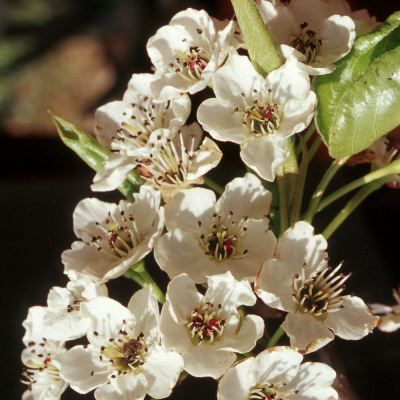

There's a whole host of ornamental crab apples that are equally worthy of space in a garden or landscape just for the blossom. Not to mention those glorious fruits later in the year. These are loved by birds and by humans alike! A tree for many different seasons and with enormous wildlife appeal too. Malus 'Rudoph' (pictured below), has copper-red new leaves, ageing to bronze green. There is an abundance of purplish-pink flowers in May, followed by orange-yellow fruits that persist on the tree into winter. It's a great tree for a small garden, growing to a maximum height of up to 6m.
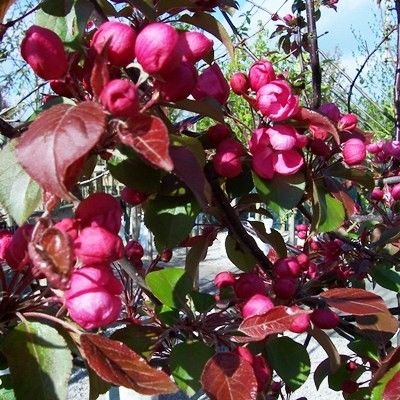

Then we have Magnolias! There are dozens of varieties, but who can fail to be charmed by the star-shaped white blooms of Magnolia stellata, the aptly-named star Magnolia (pictured below)? They appear on bare stems in early spring, usually March, just when we need cheer after the winter greyness. This compact shrub grows only to around 3 metres and can even thrive in semi-shade.
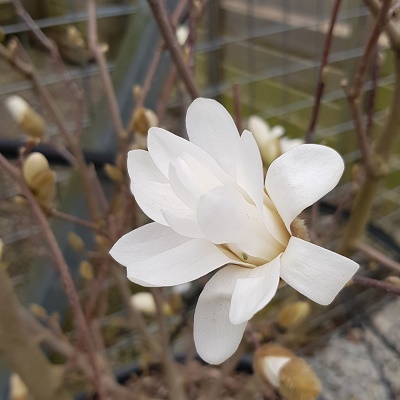

There's no doubt that we are all in love with Amelanchier, in all its different varieties. This large shrub or small tree is also known as the Juneberry and the snowy mespilus. It offers so much, all year round. Amelanchier takes centre stage in spring with star-shaped flowers that can cover the entire plant. The flowers attract pollinators (Amelanchier 'Robin Hill, pictured below). Later in the season, dark berries appear (Juneberries) and these are loved by birds. The autumn colour is one of the best in the garden.
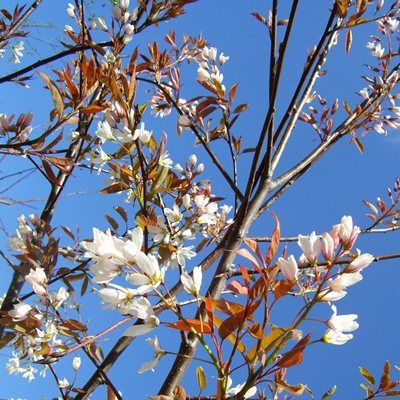

Last, but by no means least, is the glorious Hawthorn. There are several varieties of Crataegus, in addition to the native Crataegus monogyna. Some have white blossom, others have pink (such as C. Paul's Scarlet, pictured below), and even red blossom. The thorn tree can grow to a height of up to 8 metres and the haws are loved by birds. A great small tree for biodiversity.
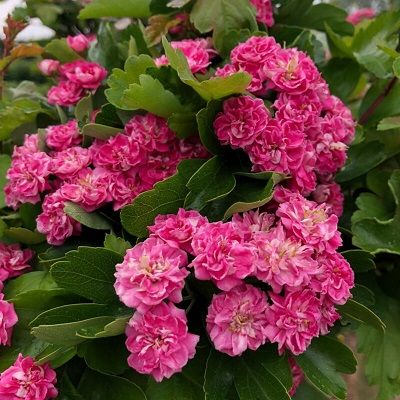

Of course, there are hundreds of different shrubs and trees that flower in spring. The difficulty lies in choosing the best for your own personal use or the wider landscape. Just ensure that you enjoy the process of finding something suitable. It should be an immensely pleasurable task! Don't forget to think about how your new additions will sit within the existing planting. There is shape, form, texture and colour to consider as well as the local conditions.
Take a look at trees, shrubs and accessories currently available at English Woodlands HERE.

